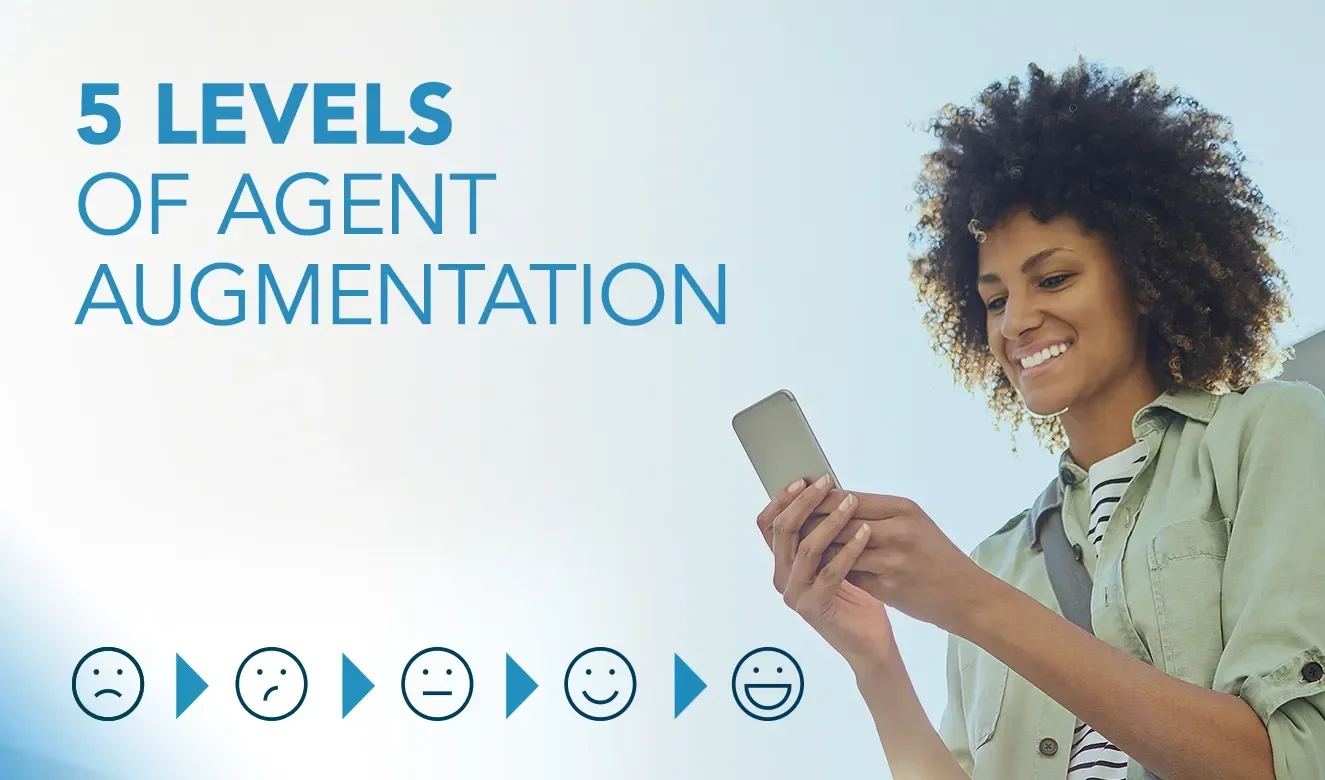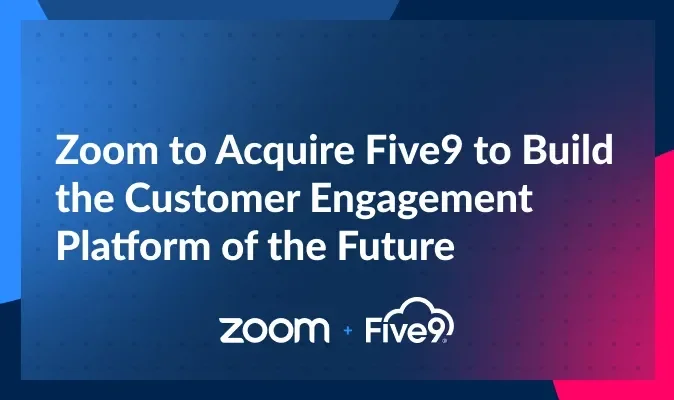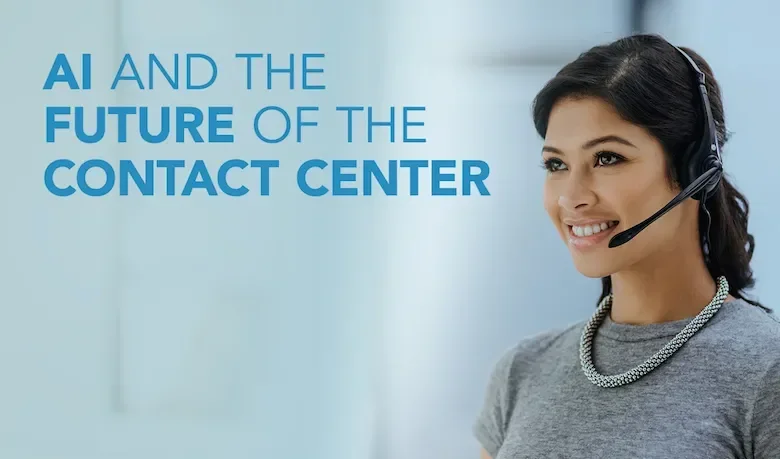
Five Levels of Contact Center Agent Augmentation
In my previous blog I shared my vision of how AI will transform the contact center. One aspect of that transformation is how AI will be used to augment human agents – I call this Agent Augmentation. In this blog, I’ll pick up on this and address the 5 levels of Agent Augmentation.
Agent Augmentation encapsulates two trends in AI development: Virtual Agents and Agent Assistance. Both technologies serve to augment human agents to make them more scalable and efficient.
The evolution of the contact center will likely be similar to other industries where AI is automating manual activities, like self-driving cars. The auto industry has an established view of the five levels of self-driving cars. Contrary to popular belief, we aren’t going to wake up one day and find that all cars are driving themselves. Instead, we are seeing a steady progression from Level One, where the human drives, to Level Two, in which automated cruise control stops and starts and keeps you in a lane. Eventually, this progression will lead to Level Five where the computer does all the driving.
Similarly, I believe the automation of common tasks and the augmentation of contact center agents will follow a similar progression.
Level One – I talk to an agent
I interact directly with an agent with no automated assistance. The agent does all the work. They answer the call, identify me, derive my intent, search for answers and respond to me to resolve my issue. I take my chances that I am going to get a good agent.
Level Two – I engage an IVR, then an agent
I engage first with an IVR that answers the call, identifies me, derives my intent, and locates and routes the voice call and my CRM data to the best agent to resolve my issue. I have a better chance of getting to an agent who is able to address my issue.
Level Three – I talk to a virtual agent, then a live agent
I am more comfortable giving my information to a virtual agent that has a more human-like demeanor. The virtual agent more easily identifies me, derives my intent and seeks to resolve my issues in a conversational manner. If it cannot, my call is transferred to an agent who is given all the information I shared previously and works with me to address my needs. This same technology applies to text channels, such as a chatbot. With machine learning, the virtual agent is self taught, increasing its accuracy as it handles and observes more interactions. In the background, the system transcribes in real time to text and, through natural language understanding (NLU), derives the context of conversation. The system searches structured and unstructured data sources for the best answer – faster and better than a human.
Level Four – I talk to a virtual agent, then a live agent who is assisted in the background
I engage first with a virtual agent, then I speak to a live agent who is supported in the background (invisible to me) by a Virtual Agent who helps them to become an expert for each interaction. Here we use real-time speech-to-text voice analysis. Cloud-based NLU interprets the call conversation in real time to provide the agent with guidance and next best action. The virtual agent also ensures that compliance and training guidelines are followed. I receive a positive experience every time.
Level Five – My complete interaction is conducted with a virtual agent
An intelligent virtual agent takes my call and directly interacts with me to address my straightforward or common issues. Access to domain-level aggregate data is critical here to train and improve the virtual agent to handle the interaction with a high degree of accuracy. Cloud contact center platforms handle millions of voice conversations annually; recordings of these interactions can be used to fine tune and refine these Virtual Agents’ knowledge base. At the higher levels of automation, Virtual Agents are able to take all calls and deal with all situations as effectively as a human agent. From and end user perspective, I may not know – or care – if I am talking to a live agent or an automated assistant. I am receiving an accurate and delightful experience.
So, what happens to all the agents?
The trend in the contact center is different than self-driving cars in one important way: While I can envision a future where no humans drive cars, I can’t envision a future in which contact centers have no human agents.
Despite the fear mongering that we are likely to see about AI replacing all the humans, I see three factors which lead me to believe we will likely have more human agents in the contact centers of the future, not fewer. I’ll cover these in my next blog.
In closing, the cloud and the rise of AI are in the early stages, and it is inevitable that they will transform the contact center as we know it today.




